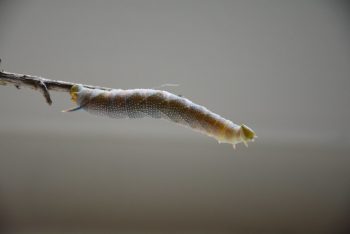Caterpillar Infestation in the Netherlands Posted by Karoly Molina on Jun 19, 2019 in News
I came across a very peculiar news article titled “Gezin ontvlucht huis voor processierups: ‘Mijn zoontje schreeuwde het uit van pijn‘” and I was surprised! I would have never imagined that caterpillars would cause so much damage that a family would feel it necessary to flee!
Eikenprocessierupsen
I must admit that I had never heard of this particular type of caterpillar or rups. The eikenprocessierupsen or oak processionary is a moth found in oak trees. Their name derives from the way they travel nose to tail. The video below was filmed in the eikenprocessiestation where the different fasen or phases of the rups are studied. This area is also used to show people how they can spot the different developmental phases to better prepare their oak trees.
Last van processierups
There has been a lot of distress caused by the excess in processierups. The heavy winds from the last couple of weeks have helped spread the critters to levels that are causing genuine discomfort. The hairs of this caterpillars can cause severe irritation in the skin. There have been problems in most of the Brabant region including in the area near the Efteling, a popular attractiepark in the Netherlands. In the town of Ede, also in Brabant, a major road is plagued with the processierups causing people to avoid it all together. The number of rupsen is so high that the hairs of these creatures are being swept with the wind and landing on people. In the video below, a woman had one of these rupsen haar in her eye.
Bestrijden
Processierups have been causing problems in the region since the 1990s and city councils are active in trying to limit the spread. The mix between warm spring temperatures and heavy winds have made the situation much worse this year. There are different methods used to control the situation including spraying the oak trees with a biological pest control formula or fluids containing a bacteria that kills the caterpillar. The oak trees are also vacuumed to remove the rupsen, however, the people who do this have to wear protective gear.
A more recent approach has been to make more mezenkasten or bird houses, particularly for the koolmees also known as the great tit. This bird is particularly fond of the larva, and the idea is that the houses will attract the birds to the oak trees and then they can have a feast!
Students from the Bonhoeffer College in Enschede have been making the mezenkasten (also called nestkasten) during their carpentry classes. They make about 30 of these houses in about 4 hours, and make sure that each house is free of chemicals or scents to ensure they are attractive to the birds and safe for the natural areas. Once the houses are ready, the students attach them to the oak trees. You can see more about this process in the video below.
Are eikenprocessierupsen also a problem in your area? How is it deal with?

Build vocabulary, practice pronunciation, and more with Transparent Language Online. Available anytime, anywhere, on any device.





Comments:
Peter Simon:
A lot more problems will soon be felt by the spread of the zijdevlinders/zijderupsen/spinners (fall webworms), an invasive soort from the Americas that have absolutely no natural enemies in Europe, and in the Netherlands nobody care about. I can’t find a way to get to local authorities to warn them although this sort is a well-known no. 1 public enemy in Hungary.
Karoly Molina:
@Peter Simon Hi Simon! I have not heard of these fall webworms, but I can imagine they will wreak havoc if they have no enemies here. Did Hungary figure out a way to control these? -Karoly